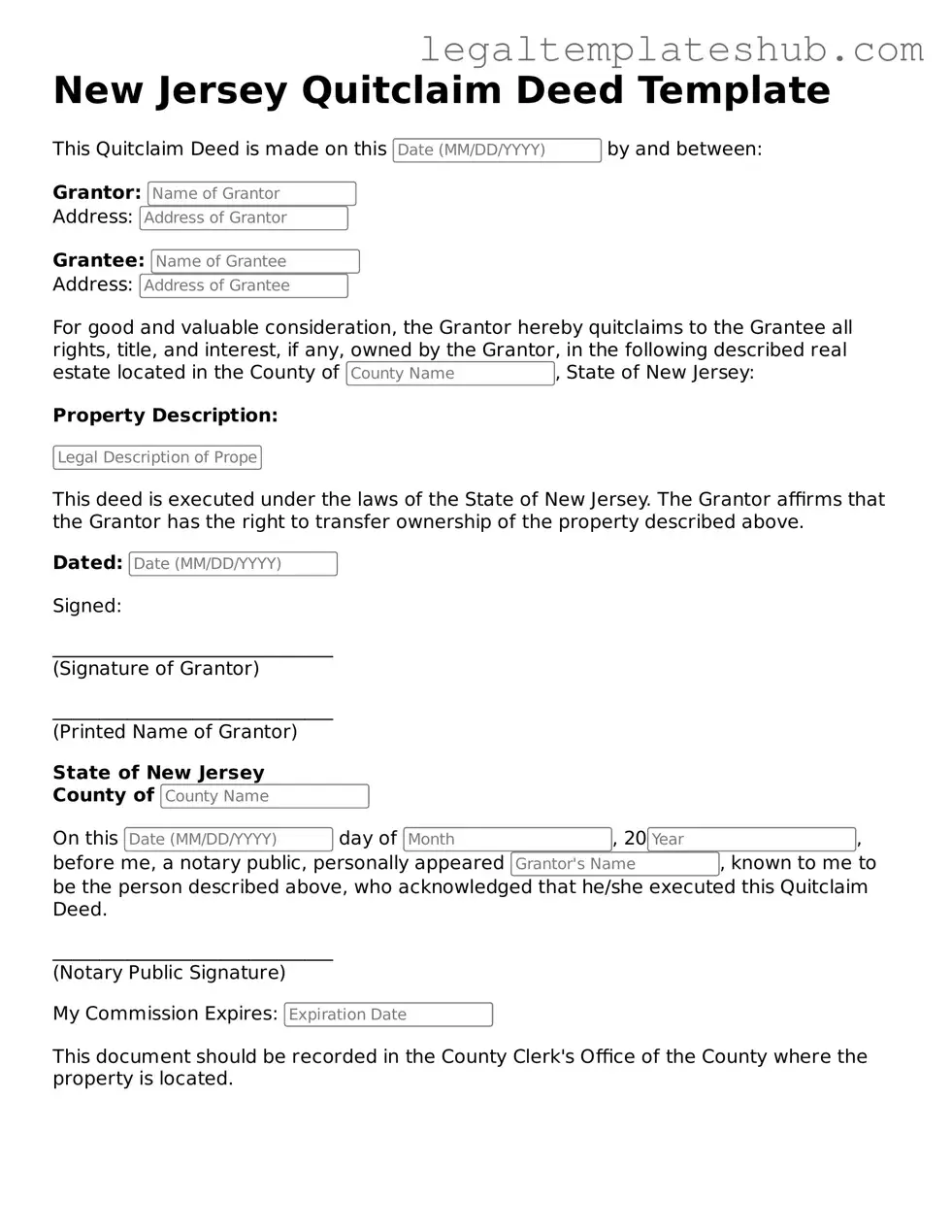Printable Quitclaim Deed Document for New Jersey
A Quitclaim Deed is a legal document used to transfer ownership of real estate from one party to another without guaranteeing the title. This form is often utilized in situations where the seller does not wish to provide warranties about the property’s title. To get started on your Quitclaim Deed, fill out the form by clicking the button below.
Access Editor
